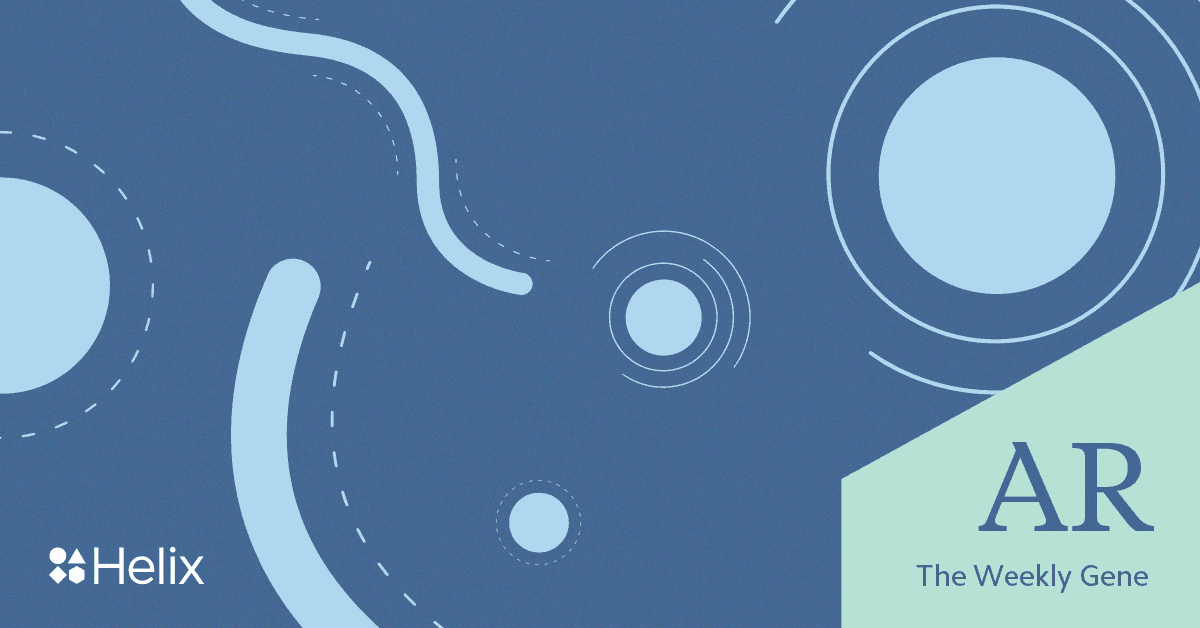How does testosterone alter cell behavior?

Information is a powerful thing, and there is a lot of information coded in your DNA. In fact, your DNA has all the information it needs to control how your cells behave by influencing when they grow, when they move, and by helping them decide which part of the body they belong to. But these functions don’t magically happen on their own—they require the help of proteins that control access to your DNA. One such protein is Androgen Receptor (AR). This protein, which contributes to the development of reproductive organs and our cardiovascular system, is activated by the presence of testosterone.
AR can control the behavior of our cells
Testosterone—and its closely related hormones dihydrotestosterone and androstenedione—all fall under the umbrella term of androgens. Androgens work by entering a cell and coming into contact with the AR protein. This contact stimulates the AR protein to change its shape and become activated. Though it’s a small change, the effect is large because it allows AR to enter the nucleus and grab onto the DNA (also known as binding the DNA)1. Once it binds the DNA, AR can influence if a gene is read or not; this means that AR is able to regulate gene expression and that the AR protein is a transcription factor.
Put another way, controlling gene expression means AR can control the behavior of our cells, and that means these hormones can affect our physiology in numerous different tissues. The Greek root word Andros—which means “male”—points to their important function in forming the male testes, prostate, and other reproductive tissues. During embryonic development, androgens direct cells to read specific segments of the DNA that hold instructions for how to build these organs.
AR has the potential to regulate many different genes and thus many different behaviors1-3. For example, AR activation by testosterone in some cell types can lead to increased expression of the FADS1 gene, which increases production of important fats2. In prostate cells, AR regulates other genes that are important for cell duplication—a helpful behavior during embryonic development when the body needs to generate more cells to build organs.
In summary, this is how hormones like testosterone and estrogen are able to affect our traits
- They bind to their respective receptors.
- The receptors then bind to the DNA.
- Once bound with the DNA, the hormone receptors alter which genes can—and can’t—be used by the cell.
- The cell’s behavior and identity is determined by the collective sum of the genes it uses.
This diagram helps illustrate the concept. On the left, the AR protein can be represented by the green orb. After activation, it binds to the DNA and promotes gene expression. It’s also possible for AR to prevent gene expression, which is depicted on the right. Of course, this is a simplification—in the real world, the process is more complex and may include many proteins.
Unfortunately, because transcription factors like AR have such a wide influence over cell behavior, it can be problematic if they’re used at the wrong time, in the wrong place, or if they’re not used when they’re supposed to be. Imagine transcription factors as a football coach in charge of the offense. This coach is capable of organizing a team and putting together an exceptional offensive drive, but that’s all this coach can do. What would happen if you accidently put them in charge of the defense? The team would fall apart because it wouldn’t be appropriate to run offensive plays when your team is on defense.
One of the more well known misuses of AR occurs during the development and progression of prostate cancer1-6. Cancer can develop for numerous reasons, but there are some common hallmarks that cause a cell to make the transformation from normal to cancerous7. One of those hallmarks is overcoming protective barriers that normally prevent cells from duplicating themselves. This is a complex process that can happen in different ways, but a common way involves misuse of important transcription factors—like AR—which are then able to alter cell behavior.
Through various means, prostate cancer cells may cause excessive activity from the AR protein4-6. Recall that, during development, testosterone binds with the AR protein and causes prostate cells to grow and duplicate themselves1. Evidence indicates that prostate cancer cells take advantage of AR by increasing the amount of AR gene expression and producing excessive amounts of the protein5,6. This allows them to sense even small amounts of testosterone and increase their drive to duplicate themselves as a result. As cancer cells duplicate, the tumors grow.
It is important to note here that the AR gene does not give a person cancer. Everyone has this gene, and the gene itself does not cause cancer. AR is simply one of the many normal tools in a cell that a cancerous cell uses to its advantage. Significant effort has been made to characterize the role of AR in cancer progression which has yielded some promising results6,8. Numerous therapeutic strategies have been developed that include the use of drugs which are capable of blocking AR function, making it harder for cancer cells to misuse it and thus harder for them to grow6. Research like this is increasing our understanding of prostate cancer and makes it possible to design specific and targeted therapeutic strategies.
In short, this is one reason why it’s important to understand the structures, mechanisms, and functions of transcription factors like AR. Knowing how they work to regulate gene expression helps us understand how our DNA contributes to our traits, and may help us identify new ways of treating genetic diseases.


1Davey, Rachel A, and Mathis Grossmann. “Androgen Receptor Structure, Function and Biology: From Bench to Bedside.” The Clinical Biochemist Reviews 37.1 (2016): 3–15. Print.
2Han, W et al. “Reactivation of Androgen Receptor-Regulated Lipid Biosynthesis Drives the Progression of Castration-Resistant Prostate Cancer.” Oncogene 37.6 (2018): 710–721. PMC. Web. 16 Apr. 2018.
3Massie, Charles E et al. “The Androgen Receptor Fuels Prostate Cancer by Regulating Central Metabolism and Biosynthesis.” The EMBO Journal 30.13 (2011): 2719–2733. PMC. Web. 16 Apr. 2018.
4Huang, Yiqiao et al. “Molecular and Cellular Mechanisms of Castration Resistant Prostate Cancer.” Oncology Letters 15.5 (2018): 6063–6076. PMC. Web. 16 Apr. 2018.
5Liu, Song et al. “A Comprehensive Analysis of Coregulator Recruitment, Androgen Receptor Function and Gene Expression in Prostate Cancer.” Ed. Maureen Murphy. eLife 6 (2017): e28482. PMC. Web. 16 Apr. 2018.
6Hoang, David T et al. “Androgen Receptor-Dependent and -Independent Mechanisms Driving Prostate Cancer Progression: Opportunities for Therapeutic Targeting from Multiple Angles.” Oncotarget 8.2 (2017): 3724–3745. PMC. Web. 16 Apr. 2018.
7Hanahan, Douglas, and Robert A. Weinberg. “Hallmarks of Cancer: The Next Generation.” Cell, vol. 144, no. 5, 2011, pp. 646–674., doi:10.1016/j.cell.2011.02.013.
8Asim, Mohammad et al. “Synthetic Lethality between Androgen Receptor Signalling and the PARP Pathway in Prostate Cancer.” Nature Communications 8 (2017): 374. PMC. Web. 16 Apr. 2018.